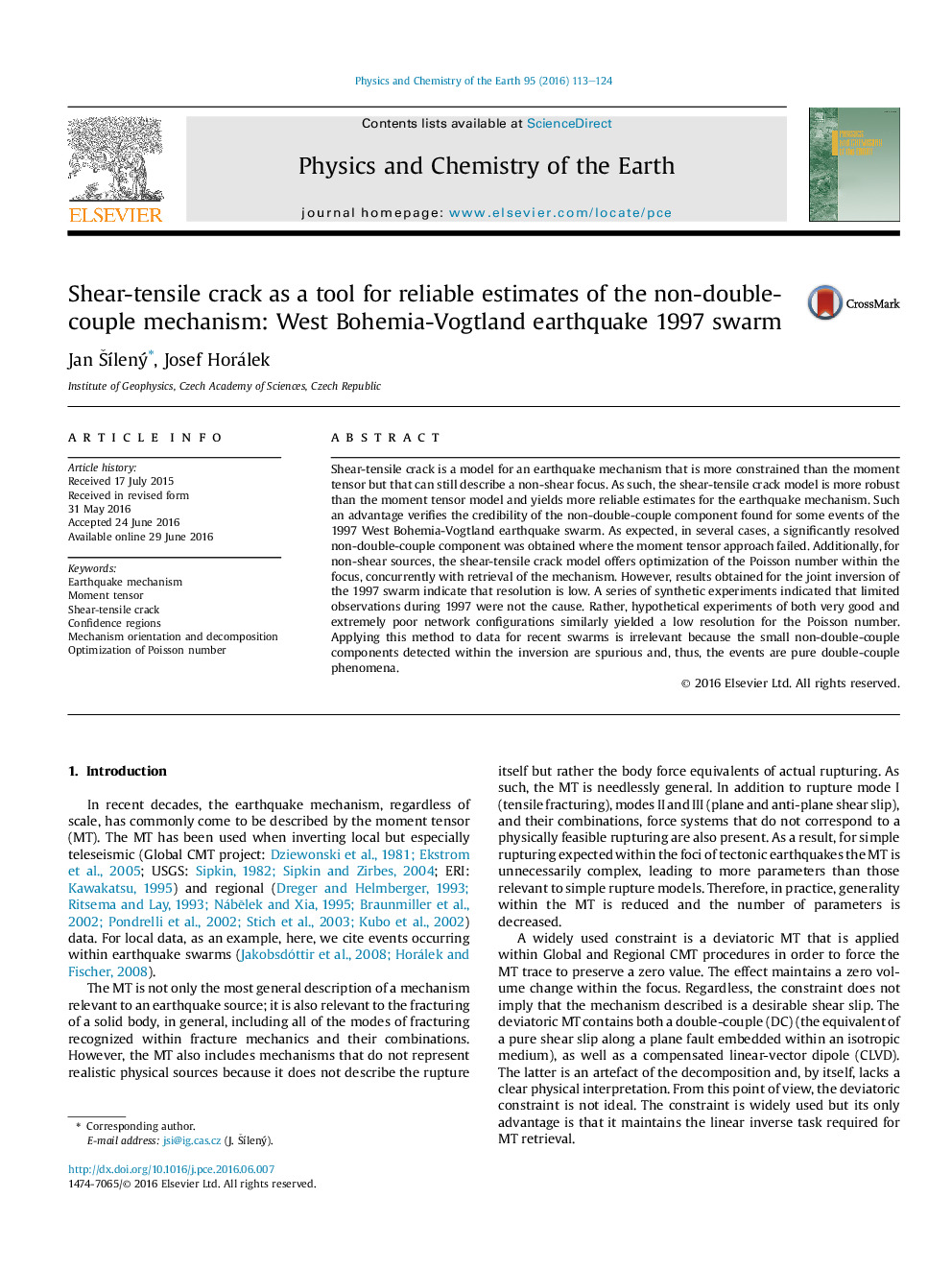| Article ID | Journal | Published Year | Pages | File Type |
|---|---|---|---|---|
| 4720792 | Physics and Chemistry of the Earth, Parts A/B/C | 2016 | 12 Pages |
•We use a model of earthquake mechanism which is more constrained than moment tensor.•It however has a capacity to describe volume changes in the focus.•We demonstrate its robustness on data of West Bohemia/Vogtland swarm 1997.•It provides significant estimates of non-shear mechanism even when the MT fails.•In addition to a non-shear mechanism, the Poisson number of the focus can be estimated.
Shear-tensile crack is a model for an earthquake mechanism that is more constrained than the moment tensor but that can still describe a non-shear focus. As such, the shear-tensile crack model is more robust than the moment tensor model and yields more reliable estimates for the earthquake mechanism. Such an advantage verifies the credibility of the non-double-couple component found for some events of the 1997 West Bohemia-Vogtland earthquake swarm. As expected, in several cases, a significantly resolved non-double-couple component was obtained where the moment tensor approach failed. Additionally, for non-shear sources, the shear-tensile crack model offers optimization of the Poisson number within the focus, concurrently with retrieval of the mechanism. However, results obtained for the joint inversion of the 1997 swarm indicate that resolution is low. A series of synthetic experiments indicated that limited observations during 1997 were not the cause. Rather, hypothetical experiments of both very good and extremely poor network configurations similarly yielded a low resolution for the Poisson number. Applying this method to data for recent swarms is irrelevant because the small non-double-couple components detected within the inversion are spurious and, thus, the events are pure double-couple phenomena.
